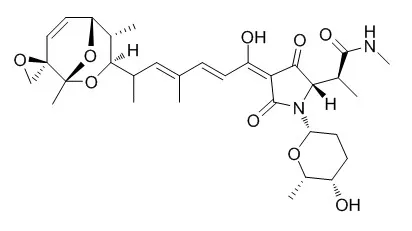The addition of precursors was one strategy to improve antibiotic production. The exogenous proline and glutamate, as precursors of Streptolydigin, could significantly improve the Streptolydigin production, but their underlying molecular mechanisms remain unknown.
CONCLUSIONS:
Herein, metabolomic analysis was carried out to explore the metabolic responses of Streptomyces lydicus to the additions of proline and glutamine. The significant differences in the quantified 53 metabolites after adding the exogenous proline and glutamate were enunciated by gas chromatography coupled to time-of-flight mass spectrometry. Among them, the levels of some fatty acids (e.g., dodecanoic acid, octadecanoic acid, hexadecanoic acid) were significantly decreased after adding glutamate and proline, indicating that the inhibition of fatty acid synthesis might be benefit for the accumulation of Streptolydigin. Particularly, the dramatic changes of the identified metabolites, which are involved in glycolysis, the tricarboxylic acid cycle, and the amino acid and fatty acid metabolism, revealed that the additions of glutamate and proline possibly caused the metabolic cross-talk in S. lydicus. Additionally, the level of intracellular glutamate dramatically enhanced at 12 h after adding proline, showing that exogenous proline may be firstly convert into glutamate and consequently result in crease of the Streptolydigin production. The high levels of Streptolydigin at 12 and 24 h after adding glutamate unveiled that part glutamate were rapidly used to synthesize the Streptolydigin. Furthermore, there is the significant difference in metabolomic characteristics of S. lydicus after adding glutamate and proline, uncovering that multiple regulatory pathways are involved in responses to the additions of exogenous glutamate and proline.
CONCLUSIONS:
Taken together, exogenous glutamate and proline not only directly provided the precursors of Streptolydigin biosynthesis, but also might alter the metabolic homeostasis of S. lydicus E9 during improving the production of Streptolydigin. |






 Cell. 2018 Jan 11;172(1-2):249-261.e12. doi: 10.1016/j.cell.2017.12.019.IF=36.216(2019)
Cell. 2018 Jan 11;172(1-2):249-261.e12. doi: 10.1016/j.cell.2017.12.019.IF=36.216(2019) Cell Metab. 2020 Mar 3;31(3):534-548.e5. doi: 10.1016/j.cmet.2020.01.002.IF=22.415(2019)
Cell Metab. 2020 Mar 3;31(3):534-548.e5. doi: 10.1016/j.cmet.2020.01.002.IF=22.415(2019) Mol Cell. 2017 Nov 16;68(4):673-685.e6. doi: 10.1016/j.molcel.2017.10.022.IF=14.548(2019)
Mol Cell. 2017 Nov 16;68(4):673-685.e6. doi: 10.1016/j.molcel.2017.10.022.IF=14.548(2019)